
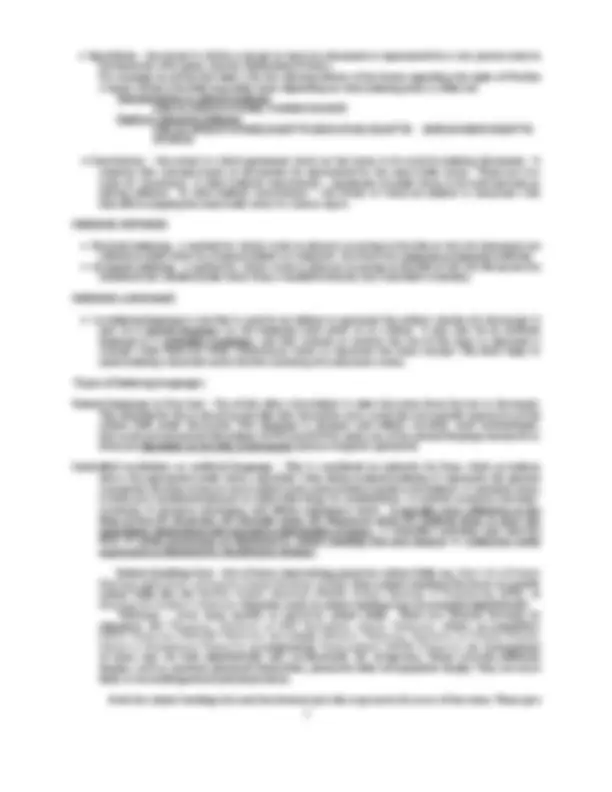
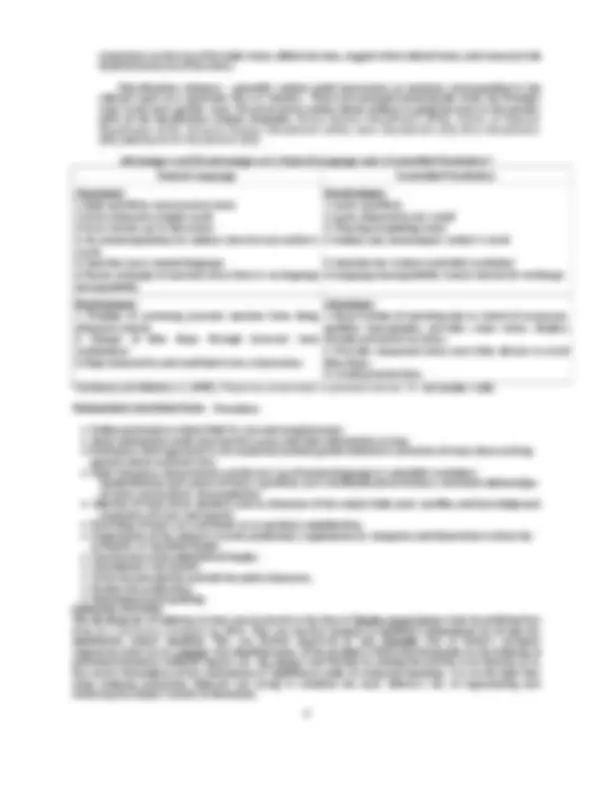
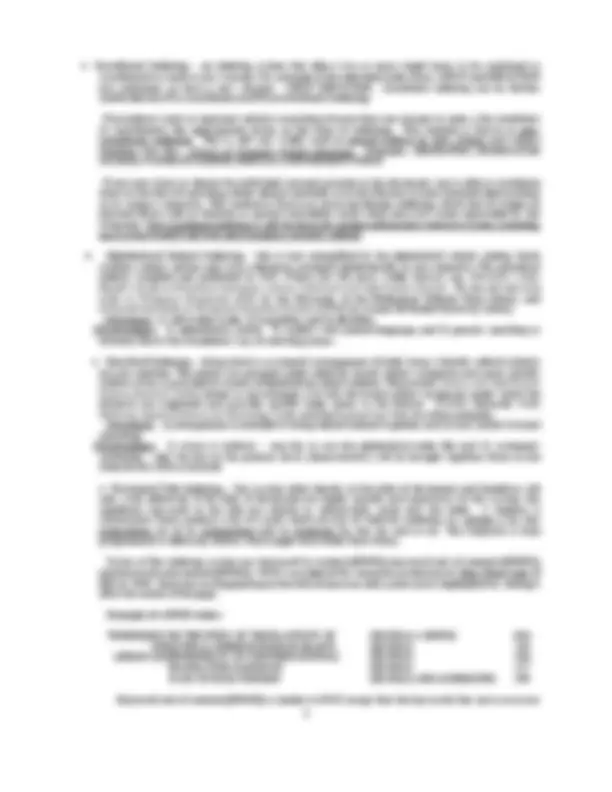
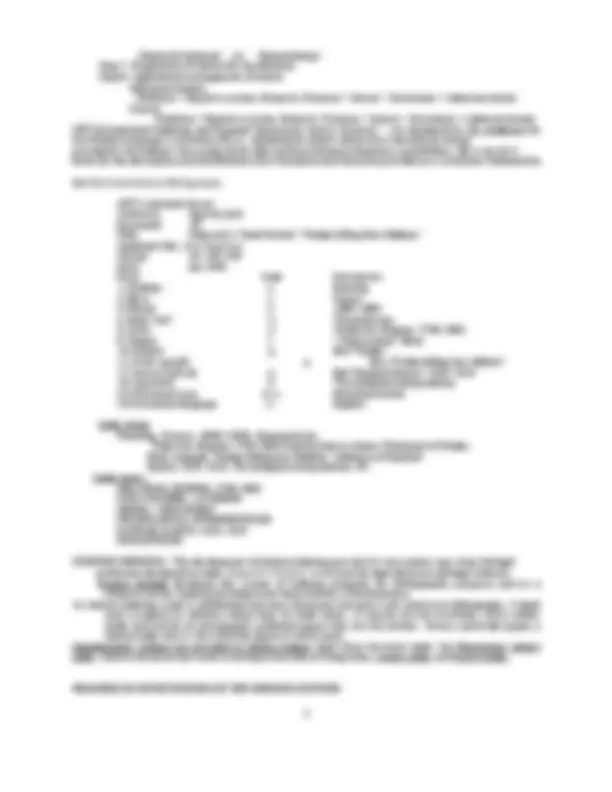
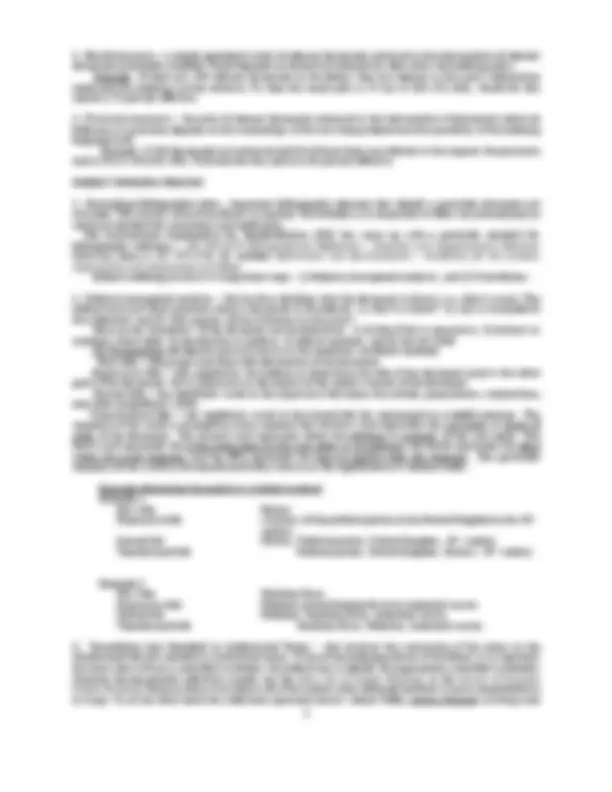
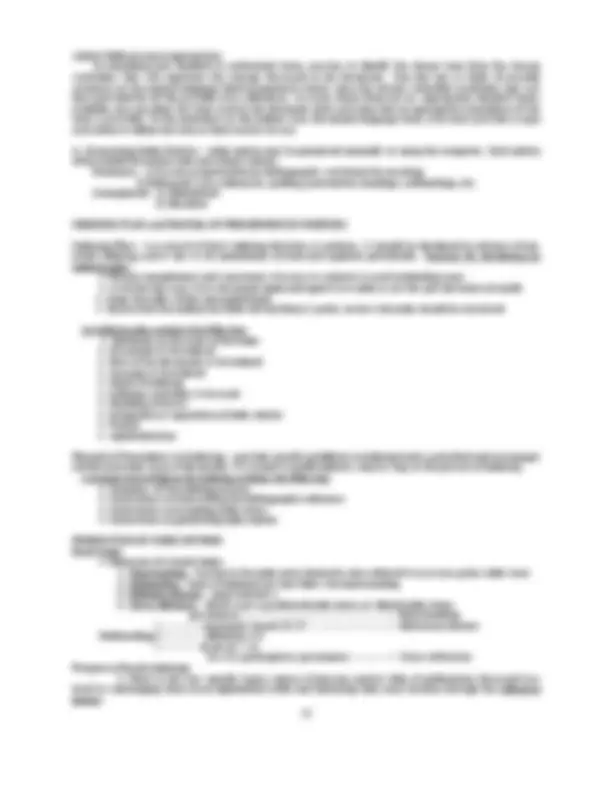
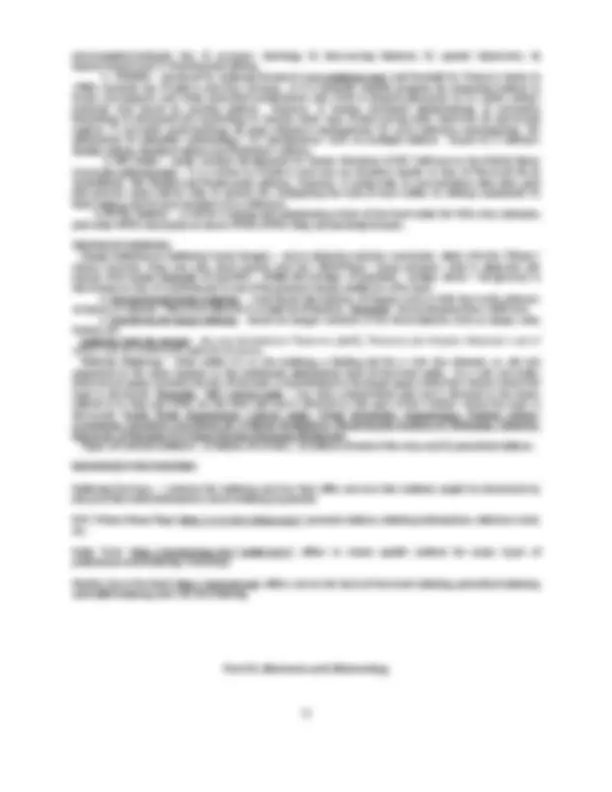
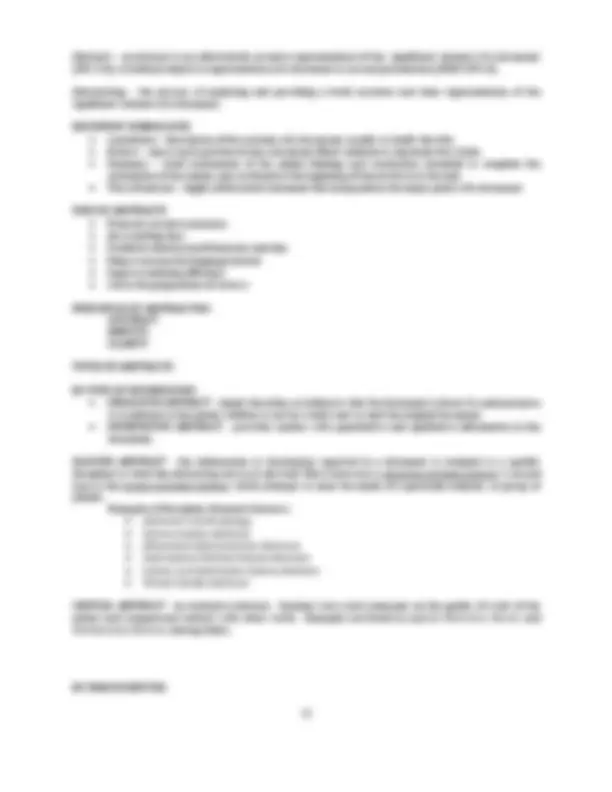
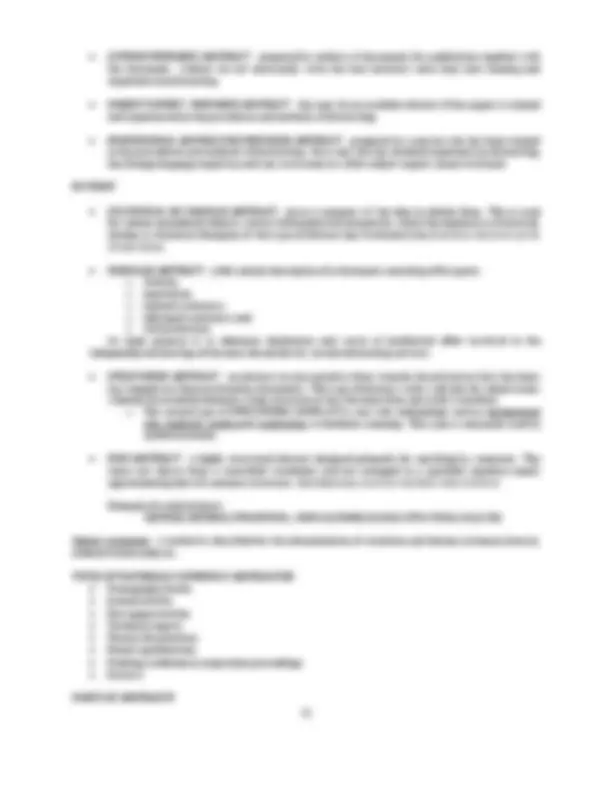


Study with the several resources on Docsity

Earn points by helping other students or get them with a premium plan


Prepare for your exams
Study with the several resources on Docsity

Earn points to download
Earn points by helping other students or get them with a premium plan
Community
Ask the community for help and clear up your study doubts
Discover the best universities in your country according to Docsity users
Free resources
Download our free guides on studying techniques, anxiety management strategies, and thesis advice from Docsity tutors
It will useful for indexers and indexing processes.
Typology: Lecture notes
1 / 17

This page cannot be seen from the preview
Don't miss anything!











On special offer
Index – a tool which indicates or points out to a user the information or source of information that one needs; it is a guide designed to indicate topics or features of documents, to facilitate information retrieval. Indexing – the process of creating an index for the purpose of information retrieval. Indexing involves selecting and assigning terms to represent concepts. The function of an index is to provide users with an effective and systematic means for locating documentary units (parts or complete documents) that are relevant to identified information needs. Indexes also serve the following functions:
By Material Indexed
restrictions on the use of the index terms, define the term, suggest other related terms, and some provide brief historical use of the terms. Classification schemes – generally contain coded expressions or notations corresponding to the relevant topics in a particular class or subclass. These are arranged hierarchically, from the broadest topic to the most specific ones. However, these contain subject indexes to guide the users to the specific parts of the classification scheme. Examples: Dewey Decimal Classification (DDC), Library of Congress Classification (LCC), Universal Decimal Classification (UDC), Colon Classification (CC), Bliss Classification (BC) , and Expansive Classification (EC). Advantages and Disadvantages of a Natural Language and a Controlled Vocabulary Natural Language Controlled Vocabulary* Advantages:
● Coordinate Indexing – an indexing system that allows two or more single terms to be combined or coordinated to create a new concept. For example, if the individual index terms ADULT and EDUCATION are combined, we have a new concept: ADULT EDUCATION. Coordinate indexing can be further subdivided into Pre-coordinate and Post-coordinate Indexing. If an indexer wants to represent subjects consisting of more than one concept as units, s/he combines or coordinates the appropriate terms at the time of indexing. This method is known as pre- coordinate indexing. This is still very widely used in printed indexes by H.W. Wilson and subject headings lists like Library of Congress Subject Headings. Examples: GEOGRAPHIC INFORMATION SYSTEMS, WOMEN IN SCIENCE, INERTIAL CONFINEMENT FUSION If one uses terms to denote the individual concepts present in the document, one is able to coordinate terms at the time of searching, either doing it manually as in the Uniterm system (terminal digit posting) or by using a computer. This method is known as post-coordinate indexing which had its origins in physical forms such as Uniterm or optical coincidence cards which have now been superseded by the computer. Post-coordinate indexing is still the basis for modern information retrieval systems, including most of the World Wide Web search engines currently utilized. ● Alphabetical Subject Indexing – this is best exemplified by the alphabetical subject catalog which contains subject entries and cross references arranged alphabetically in one sequence. The periodical indexes compiled and published by H.W. Wilson are the most widely known, e.g., Education Index, Reader's Guide to Periodical Literature, Library Literature and Information Science. So, too, are our own Index to Philippine Periodicals (IPP) by the University of the Philippines Diliman Main Library and Computerized Index to Philippine Periodical Articles (CIPPA) by Ateneo de Manila University Library. Advantages: 1) self-evident order; 2) hospitality; and 3) flexibility. Disadvantages: 1) alphabetical scatter; 2) conflict with natural language; and 3) generic searching is tiresome due to the roundabout way of searching terms. ● Classified Indexing – brings about a systematic arrangement of index terms whereby related subjects are put together. The entries are grouped under relatively broad subject categories and more specific subject access is provided by means of alphabetical subject indexes. The present Library and Information Science Abstracts (LISA) format is one example. LISA lists the broad subject categories under which the abstracts are organized and provides specific index terms to the former. PubMed (formerly Index Medicus), Applied Science and Technology Index, and the Engineering Index are other examples. Advantages: 1) arrangement is intended to bring related subjects together; and 2) best suited to broad searching. Disadvantages: 1) access is indirect – one has to use the alphabetical index file; and 2) systematic scattering – only the foci in the primary facet (characteristic) will be brought together, those in the other facets will be scattered. ● Permuted Title Indexing – this system relies heavily on the titles of documents and therefore, will only work effectively if the titles of documents are highly specific and expressive. In this system, the significant keywords in the title are rotated as subject-entry point into the index. A stoplist is constructed which contains a list of words which are not of value for indexing, i.e., articles a, an, the; prepositions on, of, in; conjunctions and, or; pronouns he, she, my; and so on. The computer is then programmed to delete any entries which might arise under these terms. Forms of this indexing system are: keyword in context (KWIC), keyword out of context (KWOC) , and keyword and context (KWAC). KWIC was adapted for computer production by Hans Peter Luhn of IBM in 1959. Each keyword appearing in the title becomes an entry point and is highlighted by setting it off at the center of the page. Example of a KWIC index: TECHNIQUE FOR THE STUDY OF THE ELASTICITY OF CRYSTALS A SIMPLE 056 STRUCTURAL IMPERFECTIONS IN QUARTZ CRYSTALS 134 LINEAR COMPRESSIBILITY OF FOURTEEN NATURAL CRYSTALS 156 TRANSLATION GLIDING IN CRYSTALS 177 FLOW OF ROCK FORMING CRYSTALS AND AGGREGATES 199 Keyword out of context (KWOC) is similar to KWIC except that the keywords that serve as access
the QUALIFIER provides the broader context while the DISPLAY shows the term of narrower context. The LEAD position will always be occupied while the other positions need not always be. Framework : A string of terms is organized according to the principle of context dependency. A>B>C>D Below are sample entries illustrating PRECIS: String : Catalysis of synthesis of organic compounds by noble metals Entries: Organic compounds. Synthesis. Catalysis. Synthesis. Organic compounds. Catalysis. Noble metals. Catalysis. Synthesis of organic compounds. Noble metals. Noble metals. Catalysis of synthesis of organic compounds A number of indexes have made use of PRECIS: British Education Index, British National Bibliography. NEPHIS (Nested Phrase Indexing System) – this was developed by Timothy Craven as a simple way of generating strings from which index entries could be generated by computer. Four symbols are used: < > left and right angular brackets mark the beginning and end of a phrase embedded or nested within a larger phrase ? question mark to introduce a connective @ sign to mark a term not to be used as an access point Example: String: Degree courses in mechanical engineering in higher education institutions <Degree Courses? in <Mechanical
Chemical treatment see Chemotherapy Step 7. Preparation of entries for classification Step 8. Alphabetical arrangement of entries Adenocarcinoma Medicine > Digestive system, Stomach ; Diseases > Cancer > Carcinoma > Adenocarcinoma Cancer Medicine > Digestive system, Stomach ; Diseases > Cancer > Carcinoma > Adenocarcinoma CIFT (Contextual Indexing and Faceted Taxonomic Access System ) – was developed by J.D. Anderson for the Modern Language Association (MLA). Alphabetical subject entries are created from strings provided by the indexer who assigns facets derived from literature, linguistics, and folklore. Has a set of 21 facets for the description and classification of art literature and these are provided in a worksheet. Published in the MLA International Bibliography. CIFT worksheet for art: Author(s): Spector, Jack Document: # Title: Delacroix's “Fatal Mother”:”Medea Killing Her Children” Container title: Arts Magazine Vol/pp: 55: 156- 159 Date: Jan 1981 Facet Code Descriptors
subject fields are more appropriate. In translating into standard or authorized terms, one has to identify the closest term from the chosen vocabulary that will represent the concept discussed in the document. One also has to think of possible synonyms in the natural language (lead-in/approach terms) since the chosen controlled vocabulary may not have provided for all the possible cross references. In cases where there are no appropriate standard terms available, one can adopt the term used in the document until such time that an appropriate translation of the term is provided. In the meantime, as the indexer uses the natural language term, s/he must provide a scope note either to define the term or limit/restrict its use.
4. Generating Index Entries – index entries may be generated manually or using the computer. Such entries often include the author, title, and subject entries. Mechanics: 1) Use of a preprinted form/bibliographic worksheet for encoding 2) Editing for cross references, spelling, punctuation, headings, subheadings, etc. Arrangement: 1) Alphabetical 2) Classified INDEXING PLAN and MANUAL OF PROCEDURES IN INDEXING Indexing Plan – is a record of basic indexing decisions or policies. It should be developed in advance of any actual indexing, and it has to be maintained, revised, and updated periodically. Reasons for developing an indexing plan: ● Ensure completeness and consistency of access to subjects to avoid misleading users ● Avoid having to go over a document again and again to re-index as on-the-spot decisions are made ● Keep the index within reasonable limits ● Ensure that the indexer has followed the library's policy on how the index should be structured An indexing plan contains the following: ● Statement on the users of the index ● Documents to be indexed ● Parts of the documents to be indexed ● Concepts to be indexed ● Depth of indexing ● Indexing vocabulary to be used ● Handling of errors ● Integration or separation of index entries ● Format ● Alphabetization Manual of Procedures in Indexing – provides specific guidelines in indexing books, periodical and newspaper articles and other types of documents. It is meant to guide indexers, step by step, in the process of indexing. A manual of procedures for indexing contains the following: ● Summary of the indexing process ● Instructions on transcribing the bibliographic reference ● Instructions on assigning index terms ● Instructions on generating index entries PRODUCTION OF INDEX ENTRIES Book Index ● Elements of a book index: 1. Main heading - top line in the index entry hierarchy; also referred to as access point, index term 2. Subheading – lines of indented text that follow the main heading 3. Reference locator – page number/s 4. Cross reference – directs user to preferred index terms or related index terms governance---------------------------------------------> Main heading <------------ community-based, 25 - 27 --- ---------------------> Reference locator Subheadings <------------ definition, 4- 5 <------------ levels of, 7- 10 See also participatory governance - -----------> Cross reference Purpose of book indexing: 1. Point to the very specific topics, names of persons, and/or titles of publications discussed in a book by rearranging these in an alphabetical order and indicating their exact location through the reference locator.
Provide main and subordinate headings, locators, and cross references such that searching may be generic, proceeding from the general to the more specific, based on the structure and text of a book.
Provide access to specific information in a book using the natural language or free text, i.e., the language used by the author. Periodical Index: ● Elements of a Periodical Index
Index term with or without a subdivision
Name of author/s in inverted order 3.Title of periodical article
Periodical title *****
Volume and/or issue number
Inclusive pages
Date of publication
Cross references MONEY – INTERNATIONAL ASPECTS ------------------> Index term with subdivision Cooper, Richard N. A monetary system for the future.-> Title of article Author ----> Foreign Affairs 63: 166-184 Fall 2006 Periodical Title ------------> <-------------- Date of publication Volume number - ----> <-------- Inclusive pages Newspaper Index: ● Elements of a Newspaper Index
Index term with or without a subdivision
Name of author or columnist in inverted form
Title of news article and/or title of column
Newspaper title *****
Column number/s
Inclusive pages
Date of publication
Cross references PASIG RIVER -----------------------------------------------------------------→ Index term Gov't gives priority to Pasig River rehab. Philipp ---------- → Newspaper title Star 1 - 3:2+ Ag 15, 2010 <----------------------------------→ Date of publication < ----------------------------------------------→ Page number <----------------------------------------------------→ Column numbers <----------------------------------------------------------------→ **Title of article
autocomplete/authority list; 3) accuracy checking; 4) time-saving features; 5) special characters; 6) import/export; and 7) checking and editing.
Abstract – an abstract is an abbreviated, accurate representation of the significant contents of a document (ISO 2 1 4); a brief and objective representation of a document or an oral presentation (NISO Z39.14). Abstracting - the process of analyzing and providing a brief, accurate and clear representation of the significant contents of a document. DOCUMENT SURROGATES
451 p. Citation format for journal articles: Surname/s of author/s, forename/s Title of article Title of journal (underline/italics) Volume number Issue number in parentheses Inclusive pages Date of publication of journal Sample citation format for journal articles Parkinson, Claire L. Paradigm transitions in mathematics. Philos Math 2(2): 127 - 150 2005 Qualities of a Good Abstract